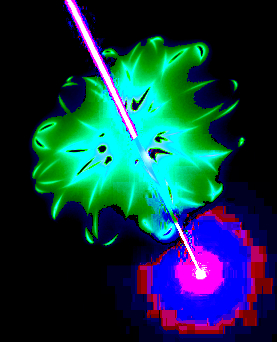Cross-border team aims to find one photon at a time
 As researchers hone the art of quantum-level control, they need more and more defined tools, a new project from Australian labs may just be the next step in the world of molecular manipulation.
As researchers hone the art of quantum-level control, they need more and more defined tools, a new project from Australian labs may just be the next step in the world of molecular manipulation.
Scientists have been waiting years for a device which can produce a single photon on command.
A high quality source of single photons is vital for advances in quantum technologies including simulation of complex molecules, mind-bogglingly secure communication and quantum computation.
“Unfortunately, nature is reluctant to create photons one at a time—they tend to come out in bunches,” says Macquarie University PhD student Thomas Meany.
“This is a serious impediment we have to overcome in order to make photon sources a useful tool.”
Meany is the lead author of a new report on a way to overcome that impediment.
The project saw engineers from Australia and France working to combine the best elements of all previous devices into a single source of individual, precisely tailored photons on an integrated optical chip.
They combined passive glass routers created by femtosecond laser writing, nonlinear waveguides in a highly advanced chip, and fast optical switching elements.
The photons were generated in a lithium niobate chip developed in the group of French researchers. Femtosecond laser-written glass circuits produced in Australia were used to embed the French chip into the larger experiment.
The results have been reported in Laser & Photonics Reviews, featuring the efforts of researchers from the ARC Centre of Excellence for Ultrahigh bandwidth Devices for Optical Systems (CUDOS) at Macquarie University and The University of Sydney, and a team from the Laboratoire de Physique de la Matière Condensée at the Université Nice Sophia Antipolis in Nice, France.
“Our chip allows the generation of up to four photons simultaneously, but as they appear randomly, we can’t predict where or when the next photon will appear,” said Dr Olivier Alibart from the Université Nice.
“Further, lithium niobate is a wonderful nonlinear optical material, but it doesn’t interface easily with other components.
“The strategy of this collaboration was to use Macquarie’s laser-written waveguides both to deliver pump light to our chip and to guide the outgoing single photons towards the switching array that selects the correct output channel,” he said.
“The laser-writing technology underlying this advance has numerous applications including quantum processing, as in this work, lasers for biology, and even the search for extra-solar planets” said Macquarie CUDOS Node director, Professor Michael Withford, who has been developing the writing technology for several years.
“Our systems can build optical waveguides of almost arbitrary 3D form in simple glass chips. We continually find that because of this flexibility and ease of fabrication, femtosecond-written waveguides are perfect for connecting different optical systems to create a single functional device.”








 Print
Print